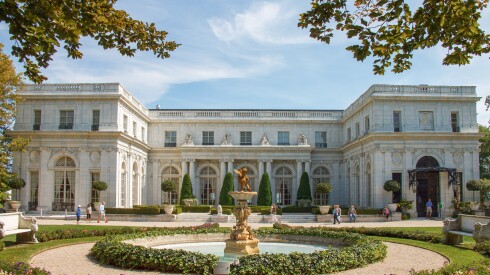How to Spend Two Weeks in Aruba
If you’re lucky enough to have two whole weeks to explore the beautiful and alluring island of Aruba, here are the lesser-known attractions and quirky adventures that will keep you busy. When you’re not unwinding on the beach, of course.
Washington 61, Noord, Aruba
Located in a former home built more than 100 years ago, this intimate restaurant excels in ambience and Caribbean specialties. Outdoor tables sit next to a pool and pretty tropical gardens, while the dining room boasts an array of European antiques. A son of the restaurant’s original owners, the current chef specializes in such dishes as bouillabaisse, crunchy okra, and cinnamon-and-brown-sugar sweet potato mash. Also on offer is seafood prepared with local spices and coconut milk. Whatever you choose, don’t miss the wine cellar, which once functioned as the home’s cheese room and now features nearly 2,000 bottles by 120 labels.
Linear Park Trail
The Caribbean features a lot of different ways to explore the ocean, but none are quite like the Atlantis submarine experience on Aruba. Guests embark on the afternoon adventure by taking a short boat ride out to the submarine dock itself. Then after boarding, passengers channel their inner Captain Nemo as they plunge more than 100 feet under water to get amazing views of coral reefs, colorful fish and even a shipwreck or two.
Schelpstraat 42, Oranjestad, Aruba
Located in a former mansion, this interactive museum is full of ancient artifacts. Culled from three distinct periods of indigenous history, the collection includes more than 10,000 pieces from Pre-Ceramic (2500 B.C.E.–1000 C.E.), Ceramic (900–1515), and History Cultural (1515–1880) times. Visitors will find shell and stone tools, decorative items, and food vessels, along with vestiges of Aruba’s gold rush. Of particular note is a limestone family burial cave, which, at 4,000 years old, is one of the most ancient pieces in the museum. With its Dutch Colonial architectural details, the building itself is also worth admiring. Note: The museum is closed on Mondays.
J.E. Irausquin Blvd, Noord, Aruba
At this tranquil spot in Oranjestad, hundreds of species of butterflies flutter among tropical flowers, groomed gardens, and a Japanese pond, all set beneath gauzy netting. Docents lead tours past rushing waterfalls, crystal-clear pools, and native flowers, sharing their encyclopedic knowledge of the pretty critters. If you’re lucky, you’ll get to witness babies hatching—one of the farm’s biggest draws. For a perfect picture, wear bright colors like yellow and orange to attract the butterflies to your shoulders.
Hooiberg
An easy adventure for the whole family, Hooiberg (with an elevation of 541 feet) is the third largest peak on mostly flat Aruba. You don’t so much hike it as you climb the 562 concrete steps that lead to her summit. Panoramic views all the way to Venezuela make it worth it.
Lloyd G. Smith Blvd 9, Oranjestad, Aruba
At Mopa Mopa in Oranjestad, local handicrafts aren’t just souvenirs—they’re decorative art. The gallery specializes in carved wooden figures, crafted lovingly in the traditional mopa mopa, or barniz de Pasto, style. To finish each piece, artisans paint them with vegetable dyes and resin-based lacquer, making for one-of-a-kind keepsakes. Visit the gallery to shop and speak with the artisans themselves, who will gladly answer questions and demonstrate their intricate techniques.
Caya di Solo 10A, Malmok, Noord, Aruba
Located on the northwest point of the island, Aruba’s only golf course offers views across the ocean and desert. It’s also independent, meaning guests at any resort can use the championship greens, which were designed by Robert Trent Jones II. Visitors to the course have access to club rentals as well as a putting green, a chipping area, and swing tutorials with a high-tech simulator. Note: Aruba’s constant trade winds present a challenge to even the most experienced golfers, so prepare for a somewhat frustrating game.
Aruba
Featuring a series of boulders that appear to have been gathered, piled, and deliberately set across a few square miles of desert, this site carries a certain air of mystery. Scientists remain baffled about the geological event that could have created the formations, while archaeologists and historians are fascinated by the petroglyphs and paintings drawn by the native Arawak people. Trails weave around the enormous stones, many of which have been named for the animals they resemble. Speaking of which, all sorts of creatures inhabit the area, from iguanas to burrowing owls.

















